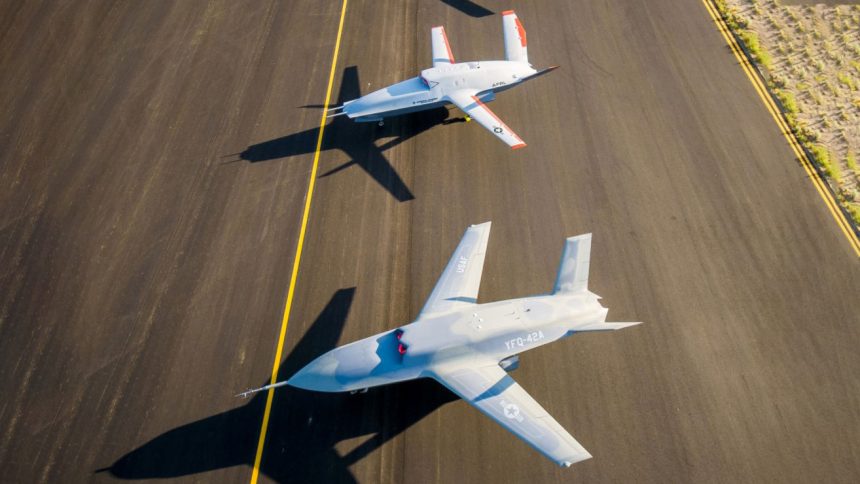The recent flight tested the integration of government-owned autonomy on the XQ-67A, paired with active tactical datalink communications.
General Atomics Aeronautical Systems announced on Jul. 16, 2025, that it has successfully demonstrated integration of government reference autonomy on the XQ-67A during a recent flight test in the California High Desert. The unmanned aircraft is part of the Air Force Research Laboratory’s Off-Board Sensing Station (OBSS) program.
The test flight
According to the company, the recent flight tested the integration of government-owned autonomy on the XQ-67A, paired with active tactical datalink communications. The goal was to enable dynamic mission execution and real-time coordination with both crewed and uncrewed systems.
With the XQ-67 described as a second-generation Autonomous Collaborative Platform (ACP), GA-ASI says the successful test flight marked a major milestone in advancing scalable, modular autonomy and seamless interoperable crewed-uncrewed teaming (C/U-T). The concept of “scalable, modular autonomy” is a central part of the current unmanned aircraft programs, as a modular, central core would allow to obtain multiple ACP configurations based on mission requirements, augmenting the crewed platforms.
“This successful test underscores the Department’s commitment to fielding autonomous systems that can integrate into joint operations using existing tactical networks,” said Mike Atwood, Vice President of Advanced Programs for General Atomics Aeronautical Systems, Inc. (GA-ASI). “Government owned autonomy on the XQ-67A is a concrete step toward deployable, combat-relevant autonomy that works with and alongside crewed platforms.”
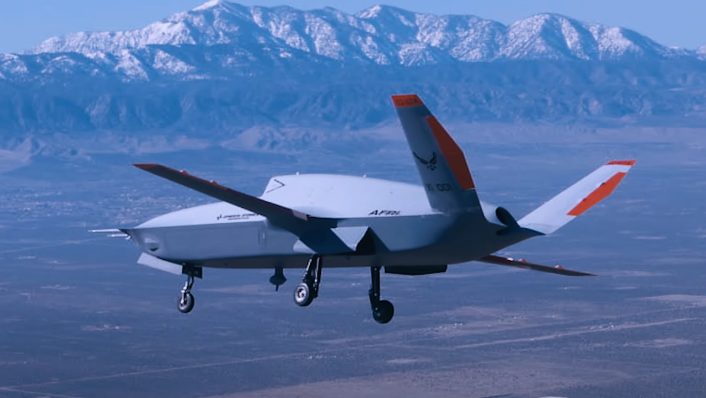
During the flight, according to the company, the XQ-67A executed test points to validate the integration of mission systems on the aircraft, including autonomy, mission computing, networking, power and thermal management, and datalinks. The mention of power and thermal management could point towards a possible relation with the Demon Ape (Demonstration of Autonomous Collaborative Platform Performance and Effectiveness) program, which includes modifications to the XQ-67A “to ensure adequate power generation and thermal management capacity.”
GA-ASI also explained that, during the test flight, the aircraft received real-time updates and situational data through a tactical datalink. Although there is no indication that the XQ-67A flew with other aircraft, the company says this would give it the ability to coordinate seamlessly with crewed aircraft and other autonomous systems in the future.
New YFQ-42A photo
Together with the press release about the test flight, GA-ASI also released a new photo showing the MQ-20 Avenger, the XQ-67 OBSS and the YFQ-42 Collaborative Combat Aircraft (CCA) together. This follows the first photo of the production representative test vehicle released in May 2025.
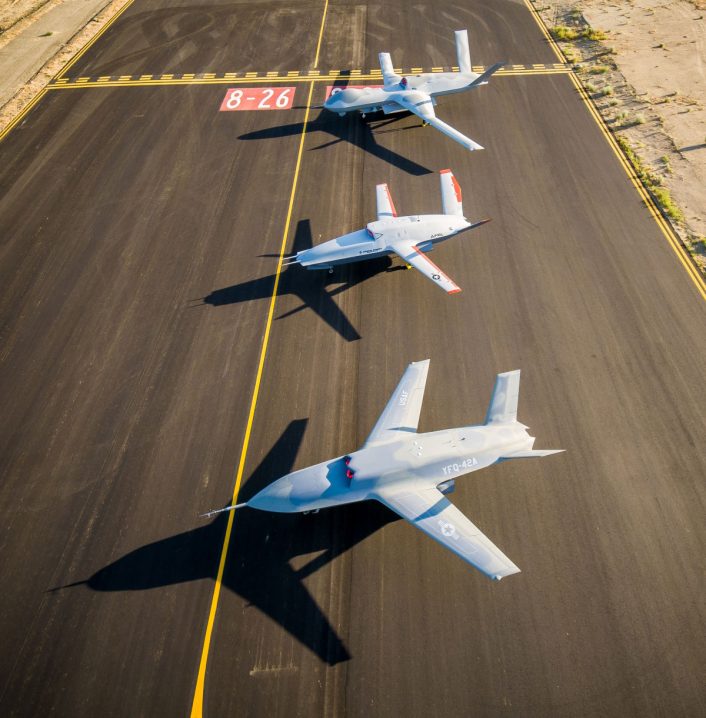
The side-by-side view allows a better look at the similarities and differences of the XQ-67 and YFQ-42. In fact, as it has been stated in the past, the YFQ-42 is derived from the earlier XQ-67.
Compared to the XQ-67, the YFQ-42A features an engine air inlet with serrated edges, similar to the B-2 Spirit stealth bomber, as well as apparently slightly modified fuselage mold lines. The nose is also different, changing from the XQ-67’s ‘shovel’-like design to a more conventional one.
Differences can be seen in the wings’ design, with the YFQ-42 showing a higher sweep angle and a higher taper ratio, as well as a larger surface. The V-tails, although they have an angle similar to the XQ-67’s, appear to be shorter, with higher taper ratio and no clipped tips.
These design changes might be the result of attempts to reduce the airframe’s radar cross-section to match stealth requirements of the CCA program. Also, the modifications reflect the CCA’s requirements for speed and maneuverability.
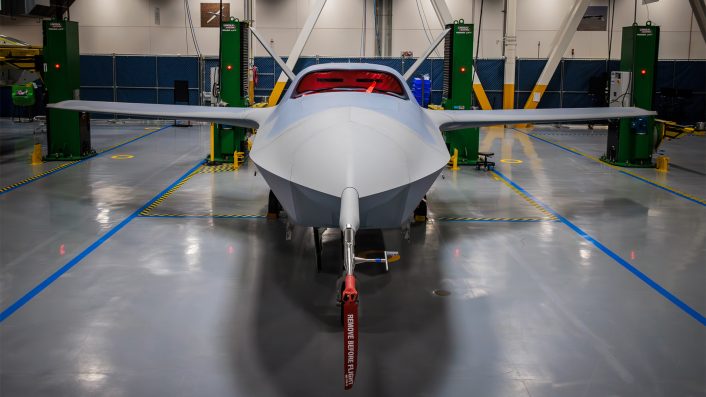
The XQ-67A OBSS
Developed by General Atomics Aeronautical Systems (GA-ASI) as part of the USAF’s Off-Board Sensing Station (OBSS) program, the XQ-67A is intended to act as an attritable forward radar node, addressing the USAF’s current urgent need for such a platform. Notable features of the XQ-67A include side-looking radars on either side of the fuselage. This unmanned aerial surveillance platform is part of the USAF’s shift towards a distributed combination of manned and unmanned aircraft to replace the E-8 JSTARS retired in 2023.
The OBSS program evolved from the former Low Cost Attritable Aircraft Technologies (LCAAT) program, which previously developed the XQ-58A Valkyrie. The subsequent Low Cost Attritable Aircraft Platform Sharing (LCAAPS) program transferred the technology and knowledge from the XQ-58A into the OBSS program. The XQ-67A is the first of the second generation of such Autonomous Collaborative Platforms (ACP).
AFRL’s XQ-67A, designed, built, ground-tested, and flown in just over two years, is remotely piloted but capable of autonomous flight. It complements the Air Force Test Center’s X-62 VISTA and F-16 VENOM efforts to speed the fielding of Collaborative Combat Aircraft (CCA).
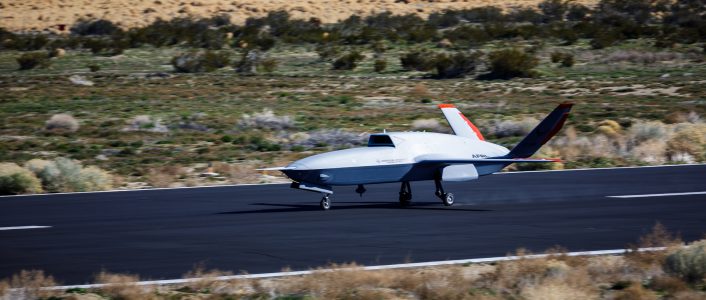
Doug Meador, ACP capability lead with AFRL’s Aerospace Systems Directorate, at the time of the first flight said that “the XQ-67A proves the common chassis or ‘genus’ approach to aircraft design, build and test.” In fact, the design philosophy is based on the “genus” and “species” concept borrowed from biology.
The “genus” represents the core of the aircraft, featuring a set of flight critical subsystems. This can be shared and used as the foundation for various autonomous collaborative platforms, the “species,” each with unique capabilities.
This “genus” approach allows different aircraft kits to be added to the frame, such as an Off-Board Sensing Station or Off-Board Weapon Station (OBWS). The OBWS is expected to be the next drone from this family, testing the abilities of a missile-carrying loyal wingman.
This approach saves time and money by leveraging standard substructures and subsystems, similar to how the automotive industry builds a product line. The XQ-67 already proved the feasibility of this approach, leveraging the work done by General Atomics and the AFRL.
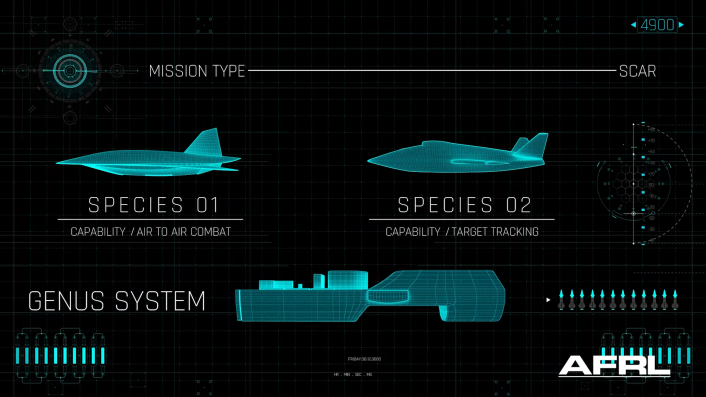
Earlier this year, GA-ASI has been awarded a sole-source contract for the Demon Ape program, which will see the XQ-67A receive new upgrades. Demon Ape, an acronym for Demonstration of Autonomous Collaborative Platform Performance and Effectiveness, is a testing program connected to the Air Force’s larger Collaborative Combat Aircraft (CCA) program.
The modifications that the XQ-67A will undergo as part of Demon Ape are not currently known. However, documents say that GA-ASI “will have to integrate the specific mission systems” and “upgrade the vehicle to ensure equate power generation and thermal management capacity.”
The same documents also mention that “there is only one XQ-67A aircraft in existence” and that it is “the only exiting aircraft designed and built from the genus/species concept that has gone through full airworthiness and flight demonstration.”

